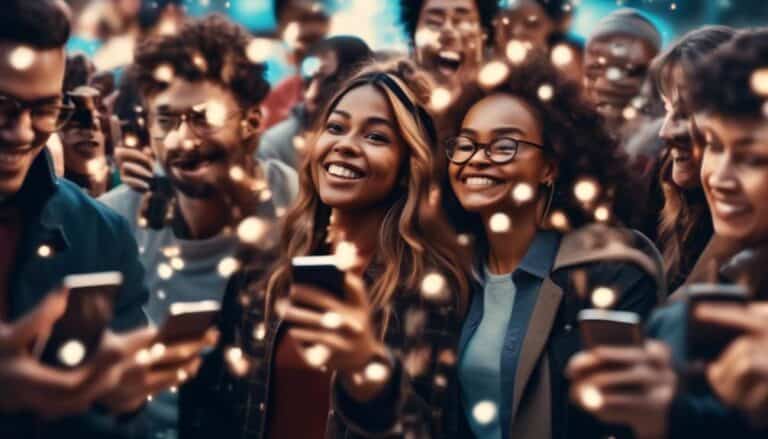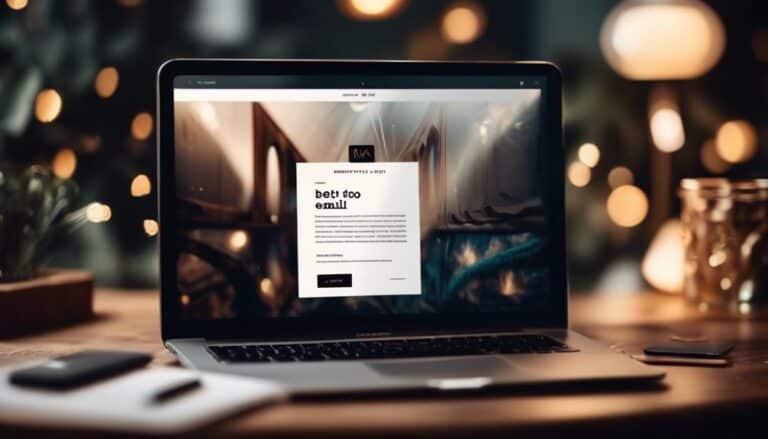Case Studies in Success: Analyzing Effective Influencer Collaborations
In today's saturated digital landscape, the power and potential of influencer collaborations continue to captivate marketers seeking effective strategies.
As you navigate the realm of social media partnerships, drawing insights from real-world cases can offer invaluable lessons on what truly drives success in influencer campaigns.
From the impact of micro-influencers on sales to the engaging dynamics of Instagram takeovers, these case studies shed light on the intricacies of forging fruitful relationships with influencers across various industries.
Discover the subtle nuances that set apart successful collaborations and uncover the key ingredients that make these partnerships thrive in a competitive online environment.
Key Takeaways
- Collaborative content creation enhances authenticity and engagement, leading to increased brand awareness and connection with the target audience.
- Micro-influencers, with their engaged audiences and personalized connections, can drive higher conversion rates and boost sales by targeting niche audiences effectively.
- Collaborating with YouTube stars can create genuine connections with consumers, drive audience engagement, and maximize brand awareness impact.
- Utilizing influencer collaborations in event marketing can enhance brand visibility, secure event sponsorships, and create unique interactive experiences that attract a larger audience.
Influencer Collaboration in Fashion Industry

In the fashion industry, influencer collaborations have emerged as pivotal strategies for brands seeking to enhance their reach and engagement with target audiences. Influencer marketing effectiveness plays a crucial role in determining the success of such collaborations. Data shows that brands that engage in influencer collaborations witness a significant increase in brand awareness and engagement metrics. By leveraging the following of influencers, brands can tap into new demographics and markets, ultimately driving sales and brand loyalty.
Collaborative content creation is another key aspect of influencer collaborations in the fashion industry. When influencers and brands work together to create authentic and engaging content, the audience perceives the message as more genuine and trustworthy. This leads to higher levels of engagement and brand affinity. Analyzing the performance metrics of such collaborations reveals that collaborative content tends to outperform traditional brand-generated content in terms of reach and impact. Therefore, brands that prioritize collaborative content creation in their influencer partnerships are likely to see greater success in connecting with their target audience and achieving their marketing objectives.
Impact of Micro-Influencers on Sales
Analyzing the sales impact of micro-influencers reveals a nuanced relationship between audience size and conversion rates. When delving into the data, several key insights emerge:
- Conversion Rates: Contrary to conventional wisdom, micro-influencers with smaller but more engaged audiences often yield higher conversion rates compared to macro-influencers. The personalized connection micro-influencers have with their followers can lead to increased trust and authenticity, translating into more conversions.
- Audience Demographics: Understanding the demographics of a micro-influencer's audience is crucial. By targeting niche audiences that align with your brand's target market, micro-influencers can drive highly qualified leads and boost sales. Leveraging audience insights to tailor the messaging can further enhance conversion rates.
- Engagement Levels: Micro-influencers tend to have higher engagement rates than their macro counterparts. This heightened engagement can translate into more meaningful interactions with potential customers, fostering a sense of community around the brand and ultimately driving sales.
Leveraging YouTube Stars for Brand Awareness
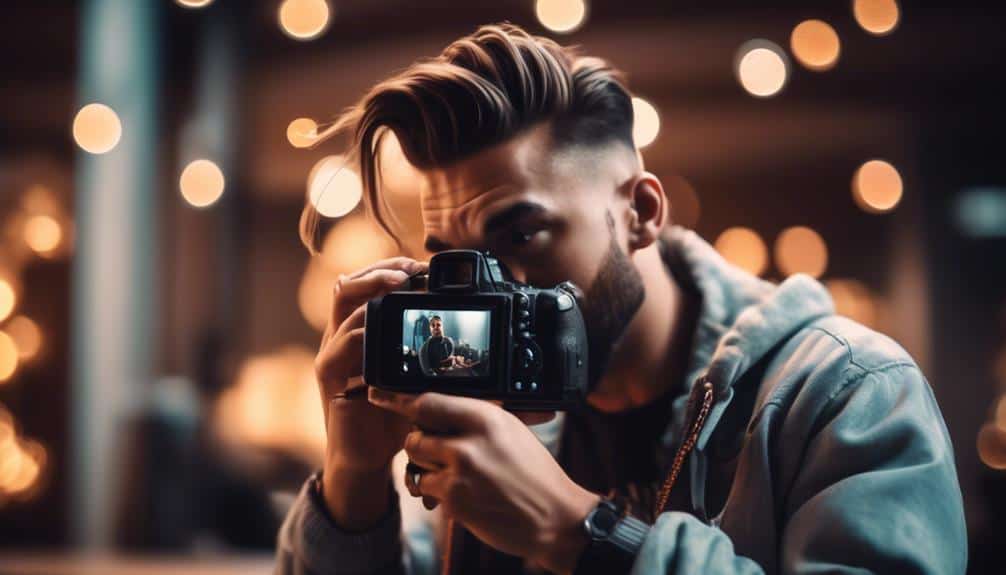
When considering strategies to boost brand awareness effectively, tapping into the influence of YouTube stars can be a potent tool in your marketing arsenal. Leveraging YouTube stars for brand awareness offers a unique opportunity to connect with a vast audience that trusts and values the authenticity of these influencers. By collaborating with YouTube stars known for their genuine content and strong engagement with their followers, brands can tap into their influencer authenticity to create a more genuine connection with consumers.
YouTube stars often have a loyal following that actively engages with their content, making them powerful vehicles for increasing audience engagement with your brand. Through strategic partnerships and well-crafted campaigns, brands can leverage the reach and influence of YouTube stars to generate buzz, drive traffic, and ultimately enhance brand awareness. By aligning your brand with the right YouTube stars whose audience aligns with your target market, you can maximize the impact of your brand awareness campaigns and create lasting impressions in the minds of consumers.
Influencer-Driven Event Marketing Success
You need to understand how event influence strategies can impact your brand's success.
Analyze engagement metrics to gauge audience interaction levels.
Evaluate the reach your brand achieves through influencer-driven events.
By focusing on these key points, you can optimize your event marketing strategies and ensure a more effective collaboration with influencers.
Examining these aspects will provide valuable insights into the effectiveness of your influencer-driven event marketing efforts.
Event Influence Strategies
Implementing influencer-driven event marketing strategies has shown significant success in enhancing brand visibility and engagement. Here's why it works:
- Enhanced Event Sponsorship: By collaborating with influencers, brands can secure more prominent event sponsorships, leading to increased exposure and credibility.
- Amplified Influencer Endorsements: Leveraging influencers to endorse events can attract a larger audience and generate more buzz around the brand.
- Interactive Experiences: Engaging influencers to participate in events can create unique and interactive experiences for attendees, boosting brand memorability and social media traction.
These strategies capitalize on the combined reach and influence of both the brand and the influencers, fostering a dynamic and impactful event marketing approach.
Engagement Metrics Analysis
Building upon the successful utilization of influencer-driven event marketing strategies, the focus now shifts towards analyzing the impact through Engagement Metrics Analysis for enhanced insights into the effectiveness of these collaborations.
When delving into Content engagement, metrics such as likes, shares, and comments provide valuable data on how well the influencer content resonated with the audience.
Evaluating Follower interaction metrics like click-through rates, mentions, and direct messages offers a deeper understanding of the level of engagement generated.
By scrutinizing these key metrics, you can pinpoint which aspects of the collaboration were most successful in driving audience engagement.
Leveraging this data-driven approach allows for more informed decision-making in future influencer partnerships, leading to greater impact and resonance with your target audience.
Brand Reach Evaluation
In analyzing the success of influencer-driven event marketing, a crucial aspect to evaluate is the effectiveness of brand reach, particularly in measuring the impact on audience engagement and brand visibility. Evaluating brand reach provides valuable insights into the overall success of influencer collaborations.
Here are three key factors to consider in brand reach evaluation:
- Brand Recognition: Assess how well the influencer collaboration enhanced brand recognition among the target audience.
- Audience Engagement: Measure the level of audience interaction and engagement generated by the influencer-driven event.
- Brand Visibility: Analyze the extent to which the brand was prominently featured and positively portrayed during the event.
Understanding these metrics can help optimize future influencer partnerships for increased brand impact and audience connection.
Instagram Takeover Campaign Results
Analyzing the metrics from the recent Instagram takeover campaign reveals a significant increase in engagement and reach compared to previous marketing initiatives. By incorporating Instagram story takeovers, the influencer collaboration led to a remarkable boost in engagement metrics. The conversion rates witnessed during this campaign were notably higher, indicating a successful strategy in capturing the audience's interest and driving action.
Instagram Takeover Campaign Results
| Metrics | Results |
|---|---|
| Reach | Increased |
| Engagement Rate | High |
| Follower Growth | Substantial |
| Click-Through Rate | Impressive |
| Conversion Rates | Elevated |
The results clearly demonstrate the effectiveness of Instagram takeover campaigns in enhancing brand exposure and engagement. The high engagement rate and elevated conversion rates signify a compelling appeal to the audience, showcasing the power of influencer collaborations in modern marketing strategies. This data-driven approach underscores the importance of innovative techniques to achieve substantial growth and impact in the digital landscape.
Beauty Brand's Influencer Partnership
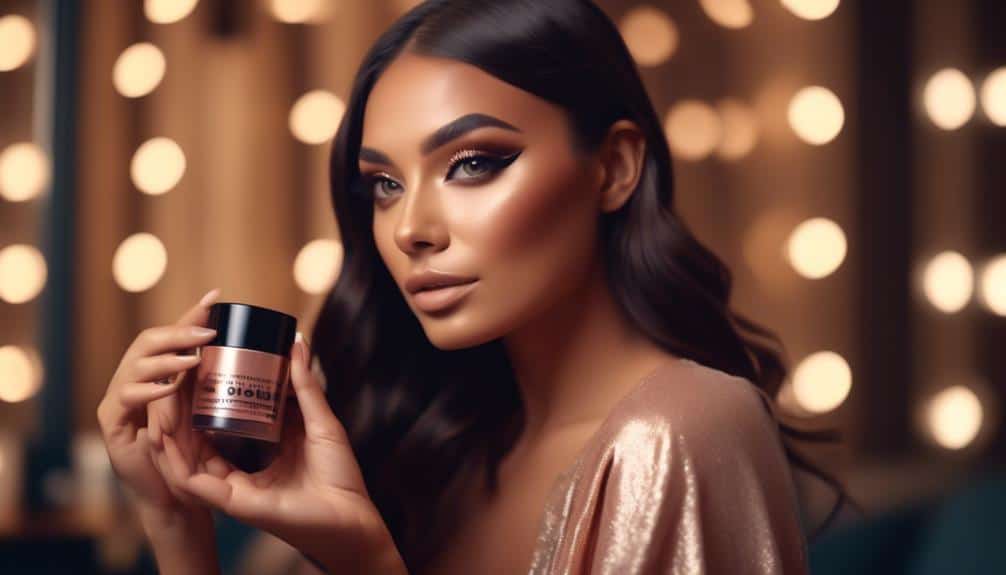
When evaluating Beauty Brand's Influencer Partnership, consider key aspects like Influencer Selection Criteria and Campaign Impact Analysis.
By scrutinizing the criteria used to choose influencers, you can gauge the potential success of the collaboration.
Analyzing the impact of these partnerships provides valuable insights into their effectiveness and can guide future strategies for beauty brands.
Influencer Selection Criteria
To ensure the success of a beauty brand's influencer partnership, meticulous consideration of specific selection criteria is imperative. When choosing influencers for collaborations, focus on the following key factors:
- Influencer Credibility: Evaluate the influencer's authenticity, trustworthiness, and expertise in the beauty industry to ensure they align with your brand values.
- Audience Demographics: Analyze the influencer's audience demographics to ensure they match your target market, including age, gender, location, and interests.
- Engagement Metrics: Look at the influencer's engagement rates, likes, comments, and shares to gauge their ability to drive interaction and create buzz around your brand.
Campaign Impact Analysis
Considering the meticulous influencer selection criteria discussed earlier, the next critical step involves assessing the impact of the beauty brand's influencer partnership through a comprehensive campaign analysis. To measure the effectiveness of the collaboration, conducting a thorough ROI analysis is imperative. By quantifying the return on investment, you can determine the financial success and viability of the partnership.
Additionally, analyzing engagement rates across social media platforms provides valuable insights into the campaign's reach and resonance with the target audience. Evaluating the social media impact generated by the influencer partnerships allows for a deeper understanding of the brand's visibility and credibility in the digital space.
This data-driven approach enables you to optimize future collaborations and drive innovation in your influencer marketing strategies.
Fitness Influencers and Brand Loyalty
Engaging with fitness influencers consistently correlates with heightened brand loyalty among their followers. Fitness influencers play a crucial role in shaping consumer behavior and preferences in the health and wellness industry. Here are three key ways in which fitness influencers drive brand loyalty:
- Nutrition Endorsements: When fitness influencers endorse specific nutrition products or brands, their followers are more likely to trust and purchase these items, fostering brand loyalty through perceived expertise and alignment with the influencer's values.
- Workout Challenges: By organizing and promoting workout challenges, fitness influencers create a sense of community and shared experience among their followers. This engagement not only boosts brand visibility but also strengthens the emotional connection between the audience and the endorsed brands.
- Wellness Retreats and Fitness Gear Collaborations: Collaborating with influencers on wellness retreats or developing exclusive fitness gear collections can enhance brand loyalty by offering unique experiences and products that resonate with the influencer's audience, driving brand affinity and repeat purchases.
Travel Influencers' Destination Promotion
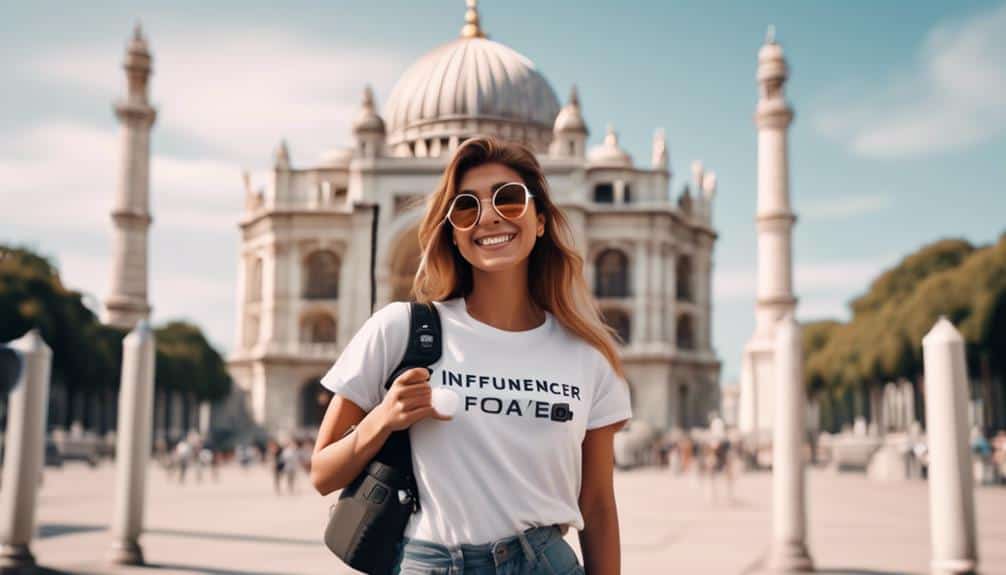
Influencer collaborations in the travel industry significantly impact destination promotion strategies, driving engagement and brand visibility through immersive experiences and authentic storytelling. When it comes to luxury resorts, travel influencers play a crucial role in showcasing the opulence and unique offerings of these destinations. By partnering with influencers who've a keen eye for luxury and a knack for creating visually stunning content, luxury resorts can attract high-end clientele looking for exclusive experiences.
On the other hand, adventure experiences are another area where travel influencers excel in promoting destinations. Whether it's scaling mountains, diving into crystal-clear waters, or exploring remote jungles, influencers bring these adventurous activities to life through their captivating storytelling and adrenaline-inducing videos. This type of content not only attracts thrill-seekers but also positions destinations as must-visit locations for those seeking unforgettable experiences.
Influencer-Generated Content Engagement
The impact of influencer collaborations in the travel industry on destination promotion strategies extends beyond mere exposure, delving into the realm of influencer-generated content engagement, where audience interaction and brand resonance play pivotal roles.
- Engagement Rates: Influencer-generated content often sees higher engagement rates compared to brand-created content due to the authentic and relatable nature of influencer posts.
- Audience Interactions: The key to successful influencer-generated content lies in fostering meaningful interactions between the influencer's audience and the brand, creating a sense of community and trust.
- Influencer Partnerships: Strategic partnerships with influencers can significantly boost engagement levels, as influencers bring their unique voice and style to the brand's content, resonating with their followers.
Frequently Asked Questions
How Do Brands Determine the Appropriate Compensation for Influencers in Collaborations?
To determine appropriate compensation for influencers in collaborations, brands conduct compensation analysis based on various factors like the influencer's reach, engagement rates, and industry standards. Influencer rates fluctuate, so ongoing assessment is crucial for fair compensation.
What Strategies Do Brands Use to Ensure Authenticity in Influencer Collaborations?
To ensure authenticity in influencer collaborations, brands employ various strategies. They validate authenticity through audience engagement metrics and content alignment checks. Establishing compensation benchmarks tied to performance metrics further solidifies genuine partnerships, fostering credibility.
How Do Brands Measure the Long-Term Impact of Influencer Collaborations on Brand Reputation?
To measure the long-term impact of influencer collaborations on reputation, brands need robust analytics tools. Quantifying results through metrics like engagement rates, sentiment analysis, and brand sentiment tracking is essential. Building trust with consumers requires transparency and consistency in influencer partnerships.
What Challenges Do Brands Face When Working With Multiple Influencers on a Single Campaign?
When working with multiple influencers on a campaign, managing expectations and communication strategies are vital. Challenges arise in aligning diverse voices, maintaining brand consistency, and ensuring a cohesive message. Strategic planning and clear directives are key.
How Do Brands Handle Negative Feedback or Backlash From Influencer Collaborations?
When managing criticism and handling backlash from influencer collaborations, it's crucial to promptly address concerns, transparently communicate with your audience, and adapt your strategy based on feedback. Embrace constructive criticism as an opportunity for growth and improvement.
Conclusion
You have seen firsthand the power of effective influencer collaborations in driving sales, increasing brand awareness, and fostering brand loyalty.
By analyzing these case studies, you can clearly see the impact that influencers have on various industries. Leveraging the right influencers for your brand can result in significant success and engagement with your target audience.
Stay informed, stay strategic, and watch your brand thrive in the influencer marketing landscape.




